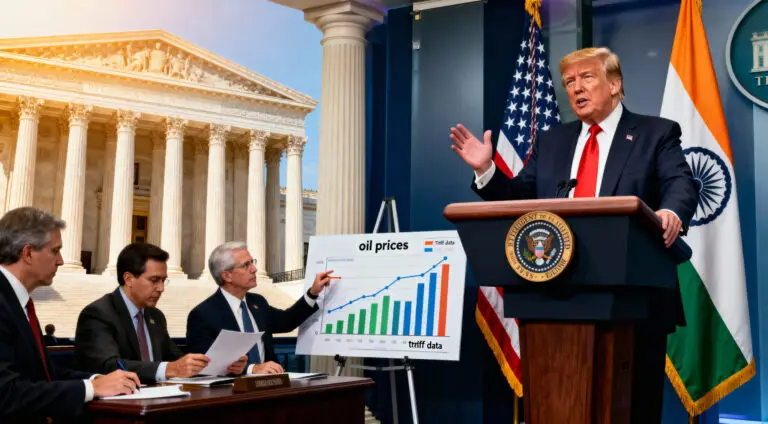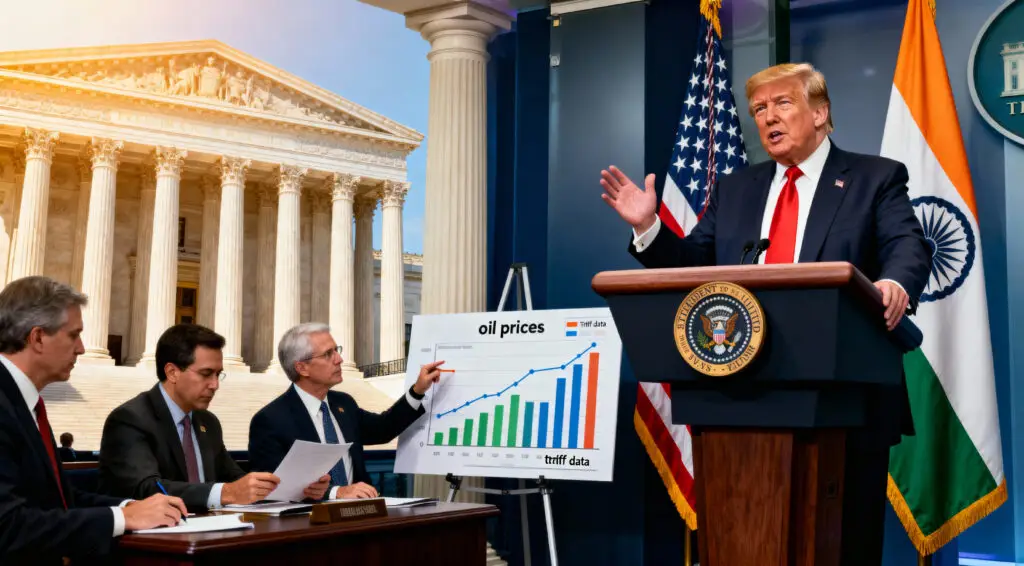The latest round of “reciprocal” tariffs by President Trump has stirred the waters of the global economy, capturing the attention of the food sector in the U.S. While ramifications in this sector may not be as pronounced as in others, the tariffs still pose significant risk for food entrepreneurs, indirectly impacting consumer prices at supermarkets.
A Comprehensive Reach: Tariffs on Everything
The new tariffs introduce an all-encompassing 10% duty on imports, with even higher rates set for certain countries deemed to be “offending” American interests. As businesses in the affected regions scramble to comply with the new regulations, some food items may elude direct tariffs, but their secondary impacts are a reason to be worried.
Canada and Mexico: A Partial Escape Route, Worrying Gaps
As part of the new USMCA framework, Canada and Mexico received some leniency under the new tariffs. Still, the 25% tariff on steel and aluminum imports remains an albatross around the neck for food processors that buy these materials to serve as packaging and production equipment for foodstuffs.
Barclays Analysis: A Muted but Real Impact
Barclays analysts stressed the food industry could be affected less “mutedly” than other consumer goods. This is somewhat due to the fact that many food supply chains are regionally focused since the food is procured and manufactured within the U.S. The report, however, has made it clear that some food companies will nevertheless suffer from difficulties.
McCormick & Company: Spices and Global Sourcing
Vulnerable, McCormick & Company is one of the largest spice and seasoning companies because of their exposure to tariff impacts. The company operates with a high level of exposure as she obtains spices from 80 different countries. McCormick does not face his fears about hot pepper tariffs that were previously feared but does face a lot of other key ingredients. A leading supplier of black pepper, Vietnam will experience a 46 percent tariff in the US, while Madagascar, the largest producer of vanilla in the world, will also face a climb in tariffs to 47 percent. The total amount of these McCormick payments will be expected to increase and severely disrupt his attempts to source alternative suppliers; even if they try to use other suppliers, they expect additional pre-combined payments from him.
Hershey: Margin Pressures and Cocoa Pricing Trends
Hershey, the confectionery behemoth, seemingly has skirted the immediate tariff worries stemming from its Mexico-based production facilities due to USMCA provisions. Nevertheless, analysts point to increasing cocoa costs as a far greater concern for the firm. Essential components such as cocoa liquor and cocoa butter, which by now constitute almost 30% of Hershey’s cost of goods sold, have seen value increases. Lowering profit margins for the company, additional tariffs placed on these raw materials, despite the supplied global processing centers like Barry Callebaut, further exacerbate the problem.
Mondelez: Limited Impact Directly, Uncertainty in the Future
Another major player in the confectionery industry, Mondelez, sources approximately 13% of its sales volume in the US from Mexico. Also in line with Hershey, the direct consequences of the new tariff will most likely be offset by the USMCA’s conditions in the short term. Still, analysts caution that shifts to the trade policy could come with added costs for Mondelez, forcing the firm to reevaluate their supply chain models.
J.M. Smucker: The Coffee Conundrum
Smucker, an important competitor in the coffee market, deals with issues related to the imports of coffee as well. Brazil, a major supplier, has a 10 percent lower tariff, while Vietnam, a big producer of robusta coffee, faces high tariffs. To minimize the impact, Smucker can change their sourcing strategies; however, analysts note that already elevated coffee prices would significantly impact profitability if any additional costs are incurred.
Campbell’s Soup: Packaging Material Costs
The same does not apply for Campbell’s Soup, whose supply chain heavily depends on aluminum and steel imports from Canada. These materials, crucial for packaging, still face the 25 percent tariffs. Campbell’s has claimed that these tariffs will hurt consumers due to products becoming more expensive.
The Broader Implications: Increased Costs Alongside Adjustments to the Supply Chain
Although some food firms are able to address the tariff problem in the short term, the broader focus shifts towards an increased cost trend. As Barclays analysts note, there’s a looming shift in exploration towards new sourcing strategies, which most likely is a response to the revised trading conditions.
Final Thoughts: An Imminent Rise in Grocery Costs
The imposition of new tariffs comes as a major risk to the food sector’s stability, even if it is not as directly affected as some other industries. Increased costs for materials such as ingredients and packaging will inevitably lead to heightened prices for consumers on numerous staple food items. The overall impact on the sector will rely on the breadth and length of the current tariffs as well as the policies businesses use to adjust to these economic shifts.















